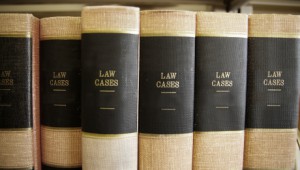 Alabama Court of Criminal Appeals Decision Sets Out Requirements For Authenticating E-mail Evidence
Alabama Court of Criminal Appeals Decision Sets Out Requirements For Authenticating E-mail Evidence
In a decision announced November 21, 2014 by the Alabama Court Of Criminal Appeals, the appellate court set out for the first time the evidentiary requirements for the admission of email evidence in an Alabama criminal trial. In Culp v. State ____ So.3d ____(2014 WL 6608543)(Nov. 21, 2014) the defendant was charged with domestic violence based on the allegation that he had assaulted his girlfriend, fracturing her job. During the trial the prosecution sought to admit a collection of emails between the defendant and the victim. The defendant objected to the admission of the emails arguing that the emails had never been properly authenticated, were not relevant, contained inadmissible hearsay, and that their prejudicial effect outweighed any probative value the emails possessed.
The Alabama Court of Criminal Appeals noted that the requirements for properly authenticating email and never been addressed by an Alabama appellate court. Because of this fact, the Court of Criminal Appeals cited several out-of-state cases which addressed the issue. The Court first cited an Idaho case which held that courts should not require direct evidence such as an admission by the author or the testimony of the witness to authenticate an email, but should instead allow circumstantial evidence establishing that the email evidence was what the proponents claimed it to be. The Idaho court noted that circumstantial proof to authenticate an email might include such things as email addresses, cell phone numbers, screen names connected with the message, the content of the message itself, fax included within the text of the email, or the style of writing. The Idaho court also noted that where available, metadata such as a document size, last modification date or computer IP address can also be used.
The Idaho court did note that while direct evidence was not required to authenticate an email, most jurisdictions would like something more than just confirmation that the number or email address to belong to a particular person. The Idaho court noted that it was important that there be evidence that the email contains some factual information or references which were unique to the parties involved.
The Alabama Court of Criminal Appeals also cited to a Indiana case which held that absolute proof of authenticity is not required in that the proponent of the evidence need only establish a reasonable probability that the document is what they claim it to be. Once such a reasonable probability is shown, any flu sickness regarding the email would go to the weight of the evidence and not the admissibility of evidence. The Indiana court also looked to factors similar to that reviewed in the Idaho case such as the email’s contents, substance, internal patterns, or other distinctive characteristics of the email to assist in its identification. The Indiana decision cited and quoted a 2007 Maryland federal district court decision which it termed as a “watershed” opinion in regards to the admissibility of email.
Quoting the official commentary to this rule, the Lorraine court observed: “ “ ‘[t]he characteristics of the offered item itself, considered in the light of circumstances, afford authentication techniques in great variety,” including authenticating an exhibit by showing that it came from a “particular person by virtue of its disclosing knowledge of facts known peculiarly to him,” or authenticating “by content and circumstances indicating it was in reply to a duly authenticated” document.’
The Court noted that Alabama Rule of Evidence 901 is worded exactly like the Federal Rule 901 as well as the rule in Idaho and Indiana. The Court implicitly adopted the reasoning used in the Idaho and Indiana cases, which in turn relied in large part on the Federal interpretation of the rule. In this particular case, the Court of Criminal Appeals held that the following evidence was sufficient to authenticate the emails:
In the instant case, Hand testified that Culp had sent the e-mails to her and that she had assisted him in setting up the e-mail account from which the e-mails had been sent. Hand said each e-mail sent from Culp’s account contained his photograph and a screen name that he used. Many of the e-mails concluded with “rnc,” which are Culp’s initials. The e-mails sent from Culp’s account also contained references that were uniquely used by Culp and Hand. Hand testified that references to “Sammy” and to Wheaties cereal were ways she and Culp talked about methamphetamine. Several of the e-mails sent from Culp’s account contained the word “Sammy” or “Sammys.” (C. 302, 308, and 314.) Another e-mail contained a reference to Wheaties cereal.
Culp v. State, No. CR-13-1039, 2014 WL 6608543, at *8 (Ala. Crim. App. Nov. 21, 2014)
This opinion is quite significant because in today’s world because email and text messaging has saturated communications between individuals as well as between individuals and entities. Increasingly, criminal defense lawyers and civil litigators are facing situations where emails are crucial pieces of evidence in cases. The clarification given by Court of Appeals will go a long way in defining the basis for authentication of this type of communication.


























